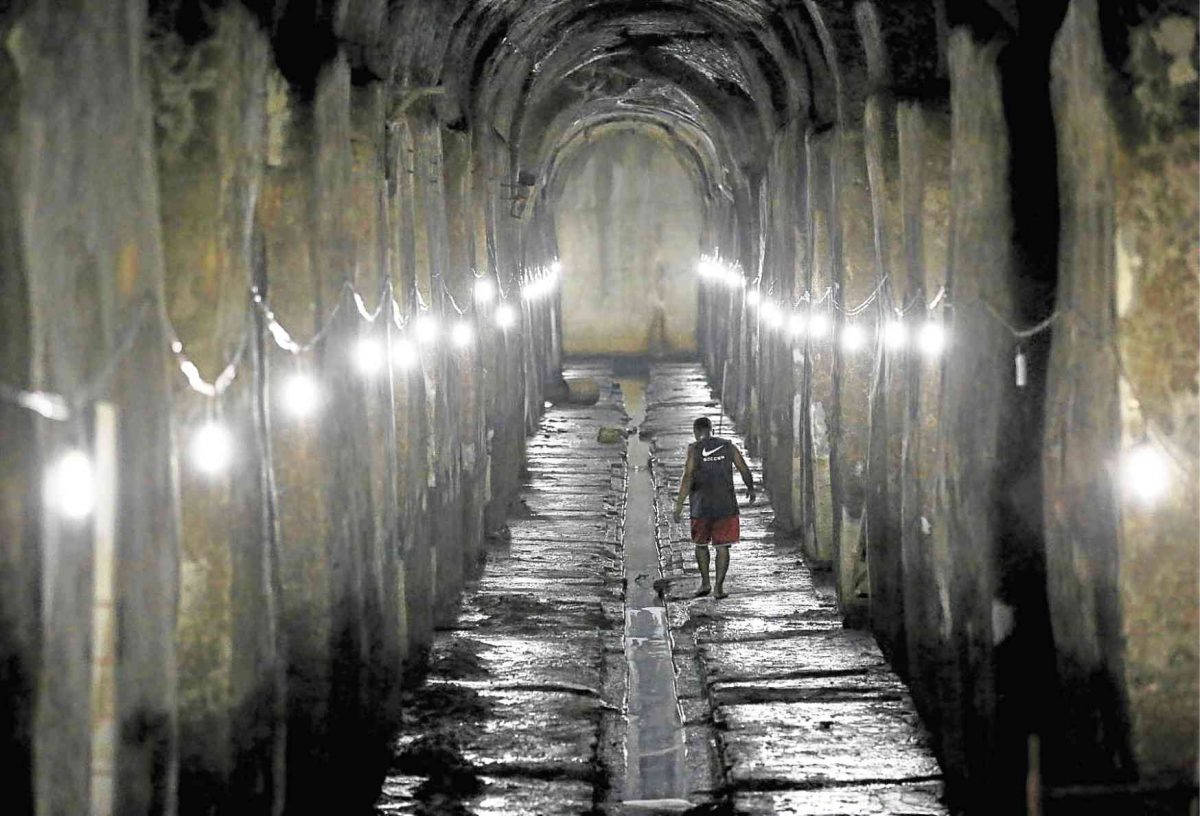
The 19th century underground water reservoir of “El Deposito” which supplied potable water to Manila will be reopening in 2020.
The 150-meter labyrinth of tunnels found underneath the grounds of Pinaglabanan Memorial Shrine have been cleared of mud and garbage in preparation of its reopening as a travel destination.
Historical records show that the 137-year-old Roman aqueducts “El Deposito” were established in 1882 as part of the Carriedo Waterworks that supplied water to 19th century Manila during the Spanish colonial period of the Philippines.
According to the newest museum of the National Historical Commission of the Philippines (NHCP) Museo El Deposito which opened in February this year, the cavernous El Deposito held water pumped from Santolan before it flowed to various fountains and hydrants in Manila.
The water reservoir’s tunnel system consists of a central canal that connected 25 smaller canals measuring 5 meters high and 3 meters wide. El Deposito had a capacity of 56,000 cubic meters of water enough to supply to 300,000 people.
Carriedo Waterworks was named after Francisco Carriedo y Peredo, a Spanish official who provided funds to the City of Manila in 1733 to create the volcanic tuff infrastructure that Spanish engineer Genaro Palacios designed and built from 1878 to 1882.
The Americans used El Deposito as an armory. The Japanese turned the cavernous reservoir into a hospital for tuberculosis patients and a firing range.
The restoration project led by the National Historical Commission of the Philippines (NHCP), Department of Tourism, and the San Juan City government, began in 2016 when the University of the Philippines Archaeological Studies Program made an assessment and excavation of the underground tunnels.
San Juan City in 2020 will add the El Deposito to its historical tourism offerings that now comprise of the Pinaglabanan Memorial Shrine, a tribute for Filipinos who fought during the Battle of San Juan del Monte on August 30, 1896, and the Museo El Deposito which narrates the history of the Carriedo Waterworks.
El Deposito’s reopening will add to the growing list of historical tourism sites in the Philippines as the country is home to some of the most enduring legacies of Spanish colonial infrastructure such as Ilocos Sur’s Vigan City stone houses and cobblestoned streets, heritage churches in Ilocos Norte and in Bohol, and the heritage park in Bataan.
In 2021, the Philippines marks the 500th anniversaries of Lapu-Lapu’s victory in Mactan, the achievement of mankind in circumnavigating the world, and the introduction of Christianity to the country when the first Spanish galleons landed on local soil.
SEND cheers to the people of San Juan and the national agencies involved in the restoration and preservation of the Philippine history artifact in Manila!
Like, Follow, Subscribe to GoodNewsPilipinas.com Facebook, Twitter, Instagram, Good News Pilipinas! TV on YouTube, new story notifications and e-mail newsletters for updates on more Filipino Pride stories.










